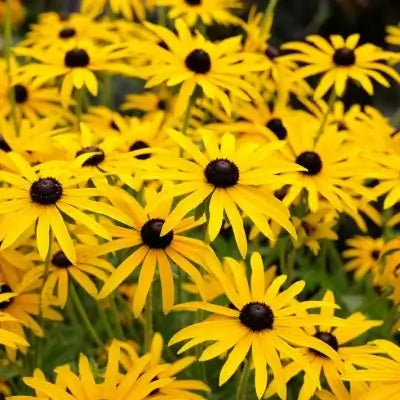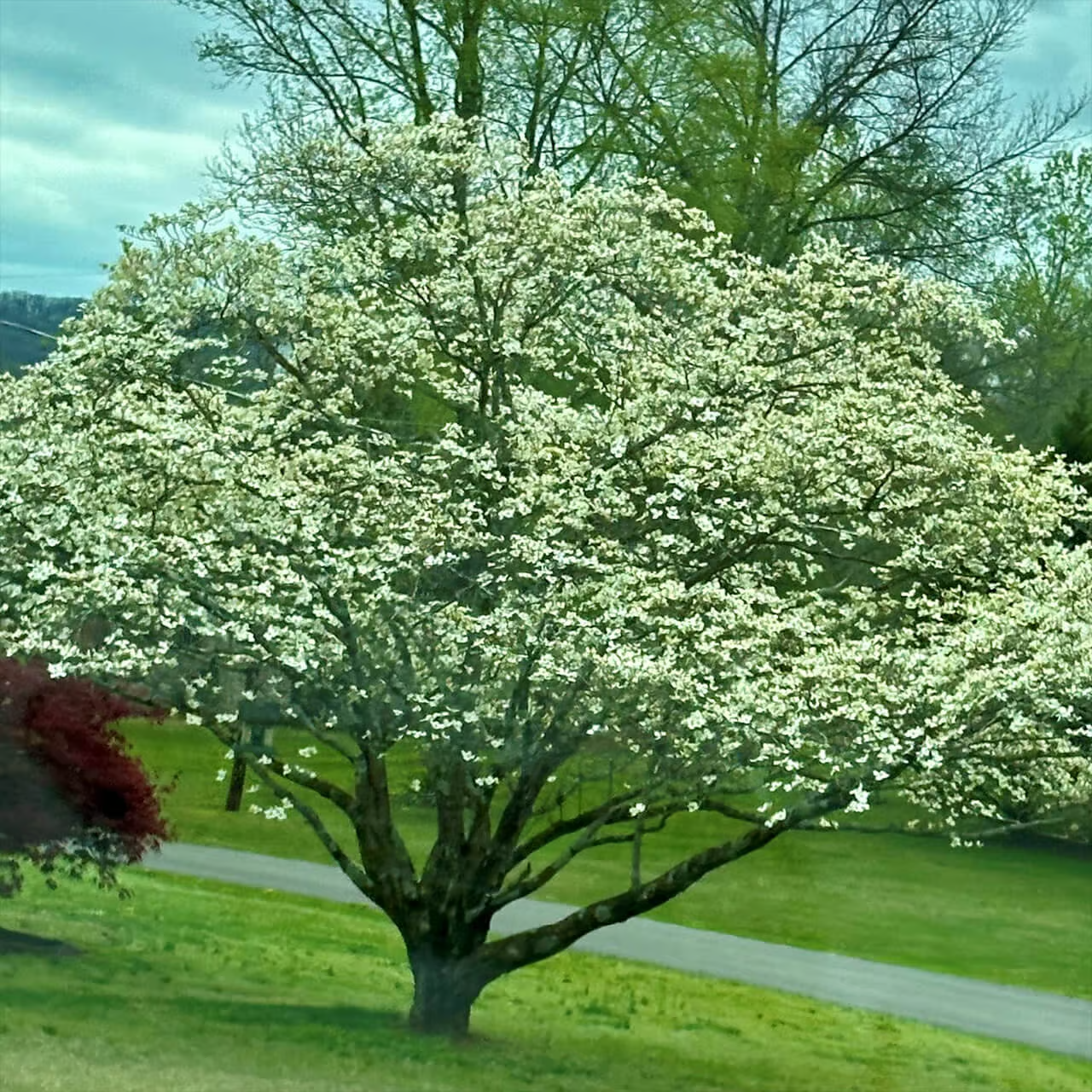
perennial plants for sales
Stunning springtime flower display
Provides year-round visual interest
Adaptable to various soil types
Thrives in
ZONE 5ZONE 6ZONE 7ZONE 8ZONE 9Planting Season:
Nov-AprilWhen you add one plant to cart, it automatically adds the second one free on Bogo deals.
The White Dogwood Tree is a beautiful, small deciduous type native to eastern North America. It is admired for its elegant, four-petaled snowy or pinkish-snowy flowers and distinctive branching pattern, often seen in spring gardens and landscapes.
They grow between 15 and 25 feet tall and have a magnificent spread of 20 to 25 feet. It grows at about 1 or 2 feet per year and usually blooms between the ages of 5 and 7.
Although the brilliant snowy blooms look like flowers, they're a particular form of leaf called bracts. Bracts look like petals and surround the actual flowers, which occupy the same space in the center of the bracts that the stamina does in a regular flower. The effect is breathtaking during the late spring and early summer when the snowy, petal-like bracts scintillate in the sunshine. The central flowers can be either yellow, snowy, or pink, and the multicolored effect is dazzling.
The regular leaves of this plant are bright green ovals that are a lighter green on the bottom. The leaves get lighter overall as the year progresses, being nearly pastel by the time they fall off during the autumn. The slow morphing of the leaves' color is one of the charming qualities of this plant, which can be a perfectly balanced focal point in any garden.
Berries form during the late summer, and the bracts gradually darken to purple as the season turns to fall. This plant is a shining example of a time-lapse color change. At the same time, this plant produces red and snowy drupes, a specific kind of berry made up of clumps of smaller items called carpels. This gives both sorts of berries a pleasing, distinctive appearance on stems about 3 inches long.
In addition to the more common species of pollinators, such as honey bees and butterflies, this White Dogwood Tree supports a specific species of andrena mining bee that only gets its pollen from them. Additionally, when they fall off, both the bracts and the leaves break down very quickly, making this gorgeous plant suitable for the soil of the whole garden. These plants will also help gardeners stave off soil erosion, so it's a good-looking plant that'll be a terrific focal point and a hardy sentry that protects the garden's soil.
What are the characteristics of them?
It produces white flowers in the spring and red berries in the fall. They mostly grow 20-30 feet in height and have a more round crown, so they can be used as a garden and landscape type.
Do they have a fragrance?
Their flowers have a characterizing sweet smell, but this smell is not very strong. In gardens and parks they are cherished largely for their visual appeal.
What is the lifespan of them?
According to experts, they have a lifespan of between 70 and 80 years, provided they grow in the right environment. If well taken care of, with proper drainage and good sunlight they should be able to last longer than is normally expected.
What is the best climate to grow them in?
They like the loamy but well-drained and non-irrigated soil that is a little acidic and semi-shade to full sun. These seeds come from the eastern part of the United States and thrive best where there is a moderate amount of rainfall. But they can be grown in vertical environments too.
What is it used for?
They are mostly grown for their beauty; their flowers and their fall colors are fantastic. For example, their dense wood has also been used throughout history in the making of things such as tool handles and small items of woodwork.

Bloom Season
Spring
Bloom/Foliage Color
White
Height at Maturity
Under 25 Feet
Care
White Dogwood Trees thrive in well-drained soil and benefit from regular watering, especially during dry periods. Trim after blooming to keep shape and clear dead wood. Apply mulch to conserve moisture and protect roots. Fertilize annually with a balanced formula.
Plant Reproduction
The White Dogwood Tree spreads via seeds, root sprouts, and layering.
Plant bare root trees during the dormant season in early spring or late fall (November through April). Dig the hole twice as wide as the roots so the soil is well-drained. Position the tree so the root flare is at or just above ground level. Fill the hole back with the soil you dug from and water. Maintain soil moisture, especially in the tree's early years, by providing deep, regular watering. Apply a 2-4 inch mulch away from the trunk at the base to retain moisture and suppress weeds. Prune trees during the first few seasons to establish strength and resilience, remove damaged branches, and continue maintenance pruning as the tree matures. Regularly inspect for pests and diseases and apply integrated pest management practices. Protect young trees from mechanical damage and extreme temperatures with tree guards, and stake them if necessary for support, removing the stakes after one or two years.
Shipping date depends on the date displayed and chosen when you order from the product's page.
We only accept returns on plants verified dead. If you think your plants have died, we offer a 1 year warranty, please use use this File a Claim Link to verify dead plants and start with return warranty process.






Striking Spring Blooms:
The White Dogwood Tree showcases large, pure white flowers that bring elegance to any garden in early spring.
Fall Foliage:
Transforms with vibrant red and purple leaves in the fall, offering seasonal color and visual interest.
Compact Size:
Perfect for smaller yards or as an accent tree, it fits well in various landscape designs.
Low Maintenance:
Easy to grow and adaptable to different soil types, requiring minimal care to maintain its beauty.
Caring Tips
Each box contains detailed care instructions and information about your product. But here's the basics.
Care Tips
White Dogwood Trees thrive in well-drained soil and benefit from regular watering, especially during dry periods. Trim after blooming to keep shape and clear dead wood. Apply mulch to conserve moisture and protect roots. Fertilize annually with a balanced formula.
Light Requirements
The White Dogwood Tree thrives in partial shade to full sun. It should receive morning sunlight and some afternoon shade for optimal growth and flowering. It can tolerate full sun in cooler climates but prefers protection from harsh afternoon rays.
Hardy Planting Zones
5 • 6 • 7 • 8 • 9
How often should I water my plants?
How do I know if my plant is getting too much or too little sunlight?
What should I do to prepare my plants for winter?
What are the signs that my plant needs fertilizing?
How can I prevent pests from damaging my plants?
How do I choose the right plant for my climate zone?